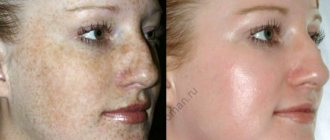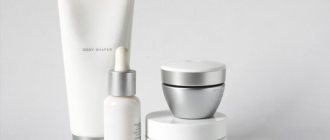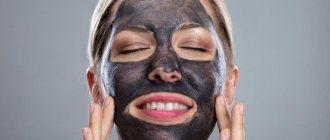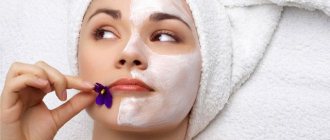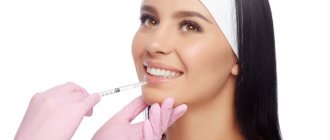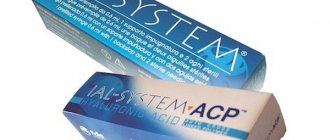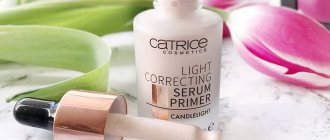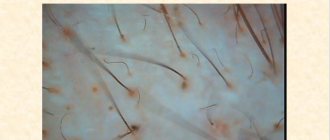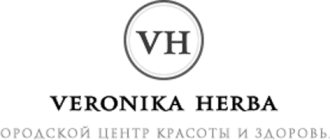Lactic acid is well known in the beauty market, but is often overshadowed by salicylic and glycolic acids - they remain the real stars of acid skin care. However, the use of lactic acid dates back to ancient Egypt - Hippocrates wrote that Cleopatra took a bath of donkey milk to smooth her skin. It is unknown how true this data is, but there is certainly a sense in such a procedure.
Lactic acid is a close relative of glycolic acid: it also belongs to the class of AHA acids. The Swedish chemist Karl Scheele first obtained the substance in 1780 from sour milk, and later his French colleague Henri Braconneau discovered that the acid is formed during lactic acid fermentation - it is to these discoveries that it owes its name. At the same time, you can get the element not only from milk and fermented milk products; there are also more ethical (vegan) sources - for example, beets or starch.
In beauty formulas, lactic acid performs the function of skin renewal. The epidermis, of course, can repair itself, but it could use some help - the accumulation of dead cells on the surface can disrupt the secretion of sebum, causing clogged pores and flaking. Lactic acid dissolves dead cells, which promotes the renewal process.
Due to the large size of the molecules, the substance is considered less aggressive than salicylic acid, but in reality it all comes down to concentration. The higher the percentage of lactic acid in the formula, the more effective its exfoliating function will be.
About the face AHA-, BHA-, PHA-acids and rules for their use for the skin: detailed instructions
What else can lactic acid do?
Lactic acid is present in the skin's natural moisturizing factor, where it is responsible for regulating the acid-base balance and helping maintain hydration levels. Research has also shown that this type of acid is involved in the synthesis of ceramides, which the skin needs to maintain a protective barrier.
Another use of lactic acid is to treat hyperpigmentation. Baghdad researchers used a solution with a high concentration of the component on the skin of patients with melasma and noticed an improvement in the condition of the epidermis without pronounced side effects.
Lactic acid is also suitable for the most common beauty needs - wrinkle prevention and acne treatment. Thus, the Institute of Medical Sciences in New Delhi proved that after 8 weeks of using a solution with 5% lactic acid, the number of rashes on the skin of patients decreased significantly. To correct wrinkles, according to another experiment, a solution with 12% lactic acid is suitable, which improves the elasticity and density of the skin. Scientists also came to the conclusion that at high concentrations the substance affects not only the epidermis, but also the dermis.
If the skin is not yet familiar with acids, you should first consult with a specialist, and then introduce lactic acid into your skin care in small quantities. You can use the component at any time of the year, as long as you do not forget about the importance of SPF - sun protection is very important for renewed skin.
How is this peeling done?
To achieve maximum effect, the milk peeling procedure is carried out according to the following scheme:
- The first step is cleansing the skin, but using gel-like textures or neutral soap, since using cosmetic milk reduces the effectiveness of acids.
- After cleansing, the skin is thoroughly dried with a clean paper towel or special swabs.
- Lactic acid is applied quickly and evenly in 1-2 layers using a brush or cotton sponge, avoiding the area around the eyes.
- The exposure time varies depending on the task, but should not exceed 20-25 minutes.
- After washing off the milk peeling, the cosmetologist applies a special neutralizer (alkaline buffer) to the skin. A prerequisite is also to moisturize the skin using a soothing or post-peeling mask.
- The final stage will be photoprotection - the use of creams with spf protection.
The last two rules apply to all types of peelings, regardless of the degree of activity and active substance.
It should be remembered that medium milk peeling, like other medium and deep peels, is not recommended during periods of active sun, as the risk of uneven hyperpigmentation and burns of certain areas of the skin increases due to its increased sensitivity to ultraviolet radiation after the procedure. Superficial milk peeling is less aggressive and has the advantage of having no strict contraindications. It can be performed at any time of the year, as it gently cleanses the skin of dead skin scales and is suitable for sensitive skin.
Glamglow exfoliating toner
If acids have long been prescribed in your care and you are not ready to give preference to just one of them, try the toner from Glamglow. The formula contains almost all representatives of the class of beauty acids: lactic, salicylic, glycolic, mandelic, tartaric and pyruvic. Plus clay and charcoal. The toner is most suitable for those with oily skin types, because it performs all the most important functions - exfoliates dead cells, cleanses pores and controls the functioning of the sebaceous glands.
Indications and contraindications
It is worth signing up for the procedure if you have problems such as:
- minor age-related changes (superficial wrinkles, thinning of the skin, decreased elasticity);
- sagging, excessive dryness or increased oiliness of the skin;
- intense peeling, non-infectious inflammation;
- hyperkeratosis (increased thickness of the stratum corneum);
- excessive secretion of the sebaceous glands;
- “black spots”, acne, acne;
- unhealthy, “tired” complexion;
- uneven skin texture.
Main contraindications:
- individual intolerance to the components of the drug;
- taking retinoids, some antibiotics and other medications that increase the photosensitivity of the skin;
- fresh tan after solarium or beach;
- acute inflammatory processes;
- skin injuries (scratches, burns, etc.);
- recent hair removal;
- colds;
- diabetes;
- cancer;
- herpes.
Dermalogica Gentle Cream Exfoliant Peeling Mask
The combination of fruit enzymes and acids in the peeling mask improves skin texture and starts the process of cellular renewal. To soften their effect, aloe vera extract was added to the product - it will also provide a moisturizing effect. The most important thing is not to overdo it with the product. It is recommended to apply the mask no more than 2 times a week for 10–15 minutes.
About the face Powder for washing: how enzymes work in cosmetics
Application for face
Since the product belongs to the class of fruit acids, its main property is exfoliation. Comparing the action with the action of analogues, we can say that it has a milder effect. Therefore, it is suitable for delicate, sensitive surfaces.
After application, it penetrates into the mouth of the sebaceous glands and removes keratinized scales that accumulate in the ducts and lead to the formation of pimples and blackheads. By using lactic acid, you will get rid of scars and marks after acne removal. Use a natural remedy regularly, and the epidermal renewal cycle is reduced by almost half.
It approaches the physiological norm when the epidermis is renewed within 25 days. Rapid change of cells and removal of keratinized particles leads to rejuvenation and whitening.
The second important property is hydration. At the molecular level, it, along with urea, amino acids, and pyrrolidone carbonic acid, forms the basis of the moisturizing factor. The substance binds water, retaining it on the surface of the epidermis. The important thing is that the liquid is collected and directed to the deeper layers, which promotes uniform hydration.
The third property is strengthening the protective barrier. Lactic acid, when used in cosmetology, causes an increase in the production of ceramides. This is a substance that, together with other elements, creates a fatty layer, reducing moisture consumption and strengthening protective barriers.
Water retention systems act both on the surface and in the depths where lactic acid penetrates. It affects fibroblasts, which are responsible for the production of hyaluronic acid. This is a natural filler that retains moisture and increases turgor. Thanks to this property, small wrinkles are smoothed out, the skin becomes elastic and elastic.
The fourth property is whitening. This property was known to the beautiful Cleopatra, who took milk baths.
The whitening effect is based on exfoliating abilities, when the pigment comes off along with the top layer.
A natural component has this property. Included in high concentrations in cosmetics, it brightens the surface by blocking the action of the enzyme that is responsible for the production of pigment.
The fifth property is the removal of irritation. It has anti-irritant properties, as it has an acidifying effect. Special elements lactathiones prevent the development of pathogenic microorganisms.
Unlike other peelings in cosmetology, lactic acid has significant advantages:
does not cause allergies or pain; can be used for dry and sensitive skin, as it does not dry out, but has a moisturizing effect; can be used in summer; rarely causes post-peeling redness.
Why do you need to exfoliate your skin?
Our epidermis is constantly renewed, “shedding” the old top layer - every day millions of cells die on the surface of the skin, making room for new and fresh ones. But after 25 years, this cycle slows down and takes approximately 45 days. The stratum corneum becomes too thick, and sebum simply does not have the opportunity to break through it. The result is clogged pores, peeling and dull complexion.
Regular exposure to lactic acid helps speed up the process to the physiological norm - 27-29 days. As a result, skin tone and overall facial condition are significantly improved.
It also has a regenerating effect and an anti-age effect. Thanks to the accelerated action of fibroblasts in the dermis, the turgor becomes more elastic, and expression wrinkles visually become smaller.
Side effects
Like all cosmetic preparations, milk peeling has its side effects:
- Severe redness, which is most often observed in those with sensitive skin. This can be easily corrected with Panthenol cream;
- A burning sensation during peeling, which disappears during the neutralization stage;
- After the procedure, slight peeling of the skin is observed in the first 2 to 4 days;
- Minor redness of the skin, which goes away on its own within a few days;
- It is extremely rare that burns can occur as a result of an unprofessionally performed procedure.
Where to find?
The following products with lactic acid for the face are presented on the cosmetics market:
- home and salon peelings – 5-20%;
- serums and creams – up to 5%;
- moisturizing masks 2-3%;
- foot creams – up to 4%;
- matting gels – 1-2%.
In addition to the main function, this component can also perform auxiliary functions: it is often used as a buffer agent that reduces alkaline aggression or as a balancing ingredient in decorative cosmetics.
Important: the product cannot be applied in its pure form! Not compatible with xanthan gum.
Advantages and disadvantages
Lactic acid is an excellent product that helps make your skin look flawless and get rid of many problems. But still, peeling based on lactic acid will not get rid of all possible changes in the skin of the face, although it will help prevent and slow down their occurrence.
Cosmetologists include the following advantages of lactic acid-based peeling:
- intensively moisturizes the skin;
- easily removes dead skin cells;
- smoothes superficial wrinkles;
- skin tone improves significantly;
- fights pigment spots;
- the relief of the skin is evened out;
- the rehabilitation period after peeling is minimal;
- can be carried out all year round;
- versatility of peeling for skin types;
- pronounced comedolytic and bacteriostatic effect.
But milk peeling also has disadvantages:
- although rare, an allergic rash to the components of the drug does occur;
- deep wrinkles cannot be corrected.
As you can see, the disadvantages are minor. We can say that there are none at all: allergies can happen to everything, and to combat serious age-related changes, there are medium and deep peels.
By the way, you can find out what type of aging your skin will change in order to choose the right care!
Description
Lactic acid (lactate) belongs to the category of AHA substances. It is produced as a result of lactic acid fermentation of sugars, caused by special types of bacteria.
Lactic acid was discovered more than 200 years ago, namely in 1780. It was isolated from sour milk in the form of brown syrup by the Swedish chemist Karl Scheele. Subsequently, the French scientist Henri Braconneau established that this substance is produced as a result of lactic acid fermentation. This was the name of the resulting substance.
Lactic acid is released:
- in sour milk;
- in sauerkraut;
- during the fermentation of wine and beer.
This substance is also present in the human body. Lactic acid in this case is formed as the end product of the breakdown of glucose without interaction with oxygen. Then aerobic oxidation of the substance occurs, resulting in the release of carbon dioxide and water. The first component is excreted from the human body through the lungs, and the second through the kidneys, skin,
In cosmetology, lactic acid gained wide popularity in the 70s of the last century. This period has been designated as the "era of fruit acids." It was then that the benefits of this substance in cosmetic products for skin and hair care were discovered.
You can buy lactic acid at the pharmacy. It is a colorless thick liquid with a slight characteristic odor and sour taste.
Exfoliating foot mask
Cleansing the skin of bad cells on the integument of the legs is difficult. If you have to be on your feet often, the dead elements do not have time to flake off and fall off. Constant loads and contact with shoes worsen the appearance of the foot, even at a young age. Elasticity and radiance are lost.
An effective remedy is required to exfoliate compacted cells. You can use cosmetic products sold in pharmacies, or prepare your own using lactic acid in cosmetology for feet.
It is found in dairy products. In this case, the exfoliating property of the product is used. When applied, dead cells are removed without affecting the healthy layer.
Kefir.
Mix kefir in the amount of one glass and salt in the amount of 1 teaspoon. Add oatmeal (100 g). Leave for 5-10 minutes to allow the flakes to swell. At this time, steam the legs so that the keratinized areas are easier to clean. Apply the prepared composition to your feet and wrap with cellophane. Wait an hour, during this time read, watch a movie or just relax. After removing the composition, rub your feet with pumice and spread a rich cream.
Sour cream.
If your feet feel dry in the evening after swimming, use an exfoliant with sour cream. To enhance the effect, add rice flour, ground coffee or ground nuts. Leave the mixture on for up to 30 minutes and rinse off.
Prices and brands of milk peels
The cost of one milk peeling procedure ranges from 1,100 to 4,400 rubles. You may also need pre- and post-peel care products costing up to 5,000 rubles. To complete a full course of milk peeling, you will need on average about 15,000 rubles.
The most common manufacturers of milk peeling that can be offered to you in a beauty salon: Toskani Cosmetics (Spain), UltraCeuticals (Australia), Meillume (USA), Sesderma (Spain), Mediccontrolpeel (Tuscany Laboratory, Russia), Dr. Irena Eris (Poland), Allura Esthetics (USA), Oxygen Botanicals (CMI, Canada), Rejuvi (Russia).
Tags: other
Market Analytics
- Global cosmetics market 2022: an unprecedented test for the global cosmetics industry
- Top 10 Cosmetic Research and Development of 2022
- 2020 in the beauty industry – innovation without borders
Convenient search for beauty salons on our website
Beauty salons in Moscow Beauty salons in St. Petersburg Beauty salons in Ekaterinburg Beauty salons in Novosibirsk
Latest blog posts on our website
- Naturecream / Properties of the “Sunny” oil itself
- Naturecream / “Sugar” wrinkles - or what glycation can do
- Naturecream / Esterified oils
- Naturecream / Arnica - the magical plant of alchemists
- Naturecream / Tremella Extract - Snow Mushroom Detox for Skin
- Prostye-sovety / How to visually enlarge your lips with makeup
- Naturecream / Apricot kernel oil for face
- Naturecream / MATRIXYL3000 - the best skin elasticity stimulator
- Naturecream / SPF in Natural Oils
- Naturecream / Geranium (Pelargonium) oil for skin health and beauty
Latest forum topics on our website
- Natalya / How to properly make a gelatin mask?
- Mrs._Smith / Badly sunburned! What to do?((
- Ice / Is it necessary to combine fitness classes with a diet?
- Antonova / What can be used for hair loss?
- Radio operatorKat / Who was on a protein diet?
Reviews about the procedure Milk peeling for the face
- LISA | 2020-07-22 08:27:03 I really liked the effect of milk peeling. I did this in the summer and applied sun protection.
- Stasya |
2017-01-19 19:21:53 Milk and almond peels are suitable for young skin with redness and acne. I’m 17, a cosmetologist gave me a course of 7 procedures with both acids and my skin became much better, minor subcutaneous skin lesions disappeared and new ones do not appear. - Olya |
2016-11-23 13:37:12 I love milk, there is no peeling irritation after it, I even use it as sunscreen in summer. - Polina |
2016-09-26 18:14:04 I usually do peelings in winter in courses, first milk, and then retinoic or peptide for rejuvenation. I like the effect. - Christina |
2014-10-10 15:39:59 I don’t have any special problems with my skin, sometimes my cheeks get a little flaky and there are small wrinkles around my eyes. I did milk peeling in the summer before my vacation, wrinkles smoothed out, my complexion became more even, my skin became denser, but at the same time soft. The cosmetologist said that you must use aloe gel and sun cream.
[Leave a review]
Leave your review of this procedure (it will appear on this page after moderation)
In this form, describe only
your personal
experience of undergoing the procedure.
In order to leave a comment regarding the content of the article, use another form - in the “comments” block at the bottom of the page.
Other articles in this section
| Peeling with lactobionic acid for the face Lactobionic peeling is one of the new generation of chemical peels. It has a complex effect on the skin and is suitable for patients of different age groups. Due to its minimal irritating effect, it is successfully used even on sensitive, acne-prone skin. |
| Ferul peeling for the face Ferul peeling is one of the most effective ways to eliminate wrinkles, age spots, circles under the eyes and other skin imperfections that upset many women. Just a few sessions will return your skin to its healthy appearance, youth and beauty. This procedure will effectively and quickly cope with cosmetic skin defects without changing your usual lifestyle. |
| Microcrystalline dermabrasion (mechanical peeling) for the face In the fight for an impeccable appearance with smooth, satiny skin, without scars, stretch marks and other unaesthetic defects, many methods have been invented. Microcrystalline dermabrasion or mechanical peeling is one of them. It is quite effective and is able to cope with defects such as scars, scars and stretch marks, and also has all the properties of mechanical peeling. |
| Salicylic peeling for the face Salicylic peeling has a powerful anti-inflammatory, antiseptic and keratolytic effect, it helps to normalize the functioning of the sebaceous glands and narrow pores. This peeling is indicated for young oily skin with minor problems, as well as for mature skin with signs of photo- and bioaging. |
| Peeling PRX One of the keys to a woman’s beauty is healthy and well-groomed skin. Many representatives of the fair sex use foundation to disguise skin irregularities. However, women often note their ineffectiveness and notice a deterioration in their skin condition. This is due to contamination of the inner layers of the epidermis with microparticles of foundation creams. You can return the dermis to its original beauty and radiance using salon procedures, for example, using PRX-t33 peeling. This article will tell you about the features of Pyrex peeling and how to use it correctly at home. |
| Glycolic peeling for the face Currently, glycolic peeling is a very common cosmetic procedure. Being one of the types of superficial chemical peeling, it primarily helps to cleanse the upper layer of the skin from dead stratum corneum, while simultaneously leveling its relief by reducing the thickness of the stratum corneum, while the thickness of the living layers of the epidermis increases, and pigmentation in areas excessively stained with melanin is normalized ( freckles, age spots). |
| Chemical peeling for the face Chemical peeling for the face is a cosmetic procedure aimed at improving the quality of the skin. This is the most gentle of all types of exfoliation. In this case, it is not mechanical exfoliation, which does not exclude a violation of the integrity of the skin, but the dissolution of dead cells of the surface layer of the skin upon contact with the peeling components. |
| Complications after peeling and dermabrasion. Methods for their correction A significant number of dermatocosmetological procedures are associated with primary damage to the epidermis and dermis. Most complications that develop as a result of iatrogenic intervention are nonspecific and are formed both as a result of direct damage to the integrity of the skin and as a result of the development of an inflammatory reaction. Proper preparation of the skin and management of the rehabilitation period can significantly reduce the risk of complications. |
| Homemade facial peeling Homemade facial peeling, of course, will not replace procedures with a cosmetologist, but it will help keep your skin in good condition. Let's see how you can do facial peeling at home using professional preparations and products that you can prepare at home. |
| Almond peeling for the face Almond peeling is a superficial chemical peeling, which is considered one of the most gentle. The use of peeling with mandelic acid is also possible in the summer, since it does not have photosensitizing effects. It is suitable for people with different skin types, including very sensitive, thin skin. |
Chemical composition
The Latin name of the component is Acidum lacticum, the systemic name is 2-hydroxypropionic acid. Chemical formula of lactate: CH3CH(OH)COOH. The molar mass of the substance is 90.1 g/mol. At a temperature of +18 degrees, the lactate begins to melt, and at 122 degrees, it boils.
Lactic acid is a monobasic carboxylic acid that includes 3 carbohydrate chains. Thanks to this feature, this substance acts evenly and slowly on the epidermis. Therefore, cosmetics containing lactic acid do not cause irritation, and the likelihood of complications is minimized. Salts and esters of this substance are called lactates.
Lactic acid comes in two types, D and L. The latter is used for cosmetic purposes, as it exhibits biological activity. It is the optical form L that is produced as a result of the natural process of fermentation of sugars and lactic acid bacteria. Therefore, this natural component is absolutely safe.
Lactic acid dissolves in glycerin, water at a temperature of +20 ° C and in alcohol. Due to its high level of hygroscopicity, lactate is most often used in the form of an aqueous syrup solution.
Peeling at home
Nowadays, stores widely offer products for regular and high-quality skin cleansing at home in the form of gels, lotions, and milk. To obtain a positive effect, it is enough to follow the instructions indicated on the package.
The sources also provide recipes for preparing peeling at home from familiar products: milk, sour cream, kefir, etc. Some advise additionally buying ascorbic and salicylic acid at the pharmacy and mixing in certain proportions.
Such combinations need to be discussed with a specialist.
